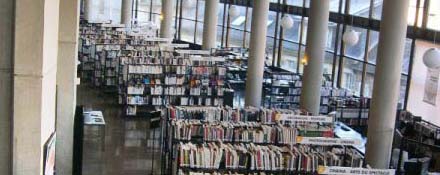
A few months ago, in an uncharacteristic moment of complete departmental exasperation, a member of the Cambridge Library Collection team suggested that instead of our original strapline, ‘Books of enduring scholarly value’, or our new one, ‘Classic paperbacks for modern readers’, we should adopt ‘We get the headache so you don’t have to’.
This of course lightened the general mood instantly (and provided me with a wonderful headline for a subsequent blog), but such gloomy moments are rare in our office, largely because we are usually completely absorbed by the wonderful and fascinating books we work with.
Cambridge University Press was one of the first publishers to seize the opportunity offered by print-on-demand technology to bring ‘back to life’ books from our own backlist for which there was a continuing demand, but which formerly could not be produced economically in small enough numbers. The success of this ‘Lazarus’ initiative led to the idea that we should, in partnership with Cambridge University Library (which is, like the Press, a department of the University), reissue ‘books of enduring scholarly value’ – from any publisher – which were no longer in copyright and would be hard for readers to obtain outside the world’s major libraries. To find out more about how we do this, you can visit our website, where (under ‘Media’) there is a short video showing the process, as well as (under ‘Books’) a complete list of our titles, sorted into subject series, and (under ‘FAQs’) an explanation of how and why books are chosen for reissue.
Wherever your interests may lie – you will find a work of enduring value to amaze, amuse, inform or delight you.
Since we began publishing in July 2009, our list has increased from an initial 475 titles to over 5,000 (and rising all the time!). Our subjects range from anthropology to zoology and cover a wide range of topics in Humanities, Social Sciences, and Science, Technology and Medicine, while our time span has extended backwards from the nineteenth century to the eighteenth. Although the University Library remains our main partner and source of books, we have also developed relationships with many learned societies in the U.K., who not only provide us with suggestions but also lend us books from their specialised collections.
The CLC project has given us the special privilege of access to the so-called ‘closed stacks’ in the University Library, in which the rarer and older books are kept. It is very difficult not to get distracted inside this wonderful labyrinth by the books on either side of the one you are looking for, and occasionally, we have published one of these random finds: our best-seller (by units), Cambridge Jokes, is an example.
We do not usually attempt to produce a facsimile of a particular copy of a book, but occasionally we are tempted to leave in a dedicatory inscription: that of Charles Darwin to his son Francis, or Fridtjof Nansen to Sir George Darwin, for example.
More frivolously, we find things left as bookmarks by earlier readers: usually borrowing slips of various ages, old envelopes or slivers of paper with scribbled notes. A great many of the books have been written in, sometimes by the original donors, but often, we suspect, by furtive later readers. There are occasional burn marks which recall the carefree distant days of the don with pipe or cigarettes in his library, and – much more disturbingly – sometimes colour plates or folded maps are missing because they have been razored out.
At the other end of the spectrum, some of the books we borrow have all or some of their pages uncut – that is, nobody wanted to read the book all the way through. I can assert confidently on this evidence that Cymbeline was Shakespeare’s least read work in the 1800s: in the four different nineteenth-century Shakespeare editions we publish, this play was the one most likely to be left uncut in the original book.
Among the challenges we face before reissuing the books are inputting modern standard bibliographical data (including newly written blurbs), scanning the pages (and checking that none are missing!), cleaning up and repairing the text on-screen where necessary (all those faint or broken letters, ink blots and burn marks…), and creating fresh and attractive covers, in our distinctive CLC branding, using an appropriate image for each book. This is skilled, painstaking and time-consuming work, but Cambridge quality – both of content and of metadata – requires no less.
But a major result of the CLC enterprise is that we have all become great enthusiasts for our books, only too eager to sing their praises to colleagues and unsuspecting strangers alike. If you don’t believe me, visit the website, and – wherever your interests may lie – you will find a work of enduring value to amaze, amuse, inform or delight you.
Latest Comments
Have your say!